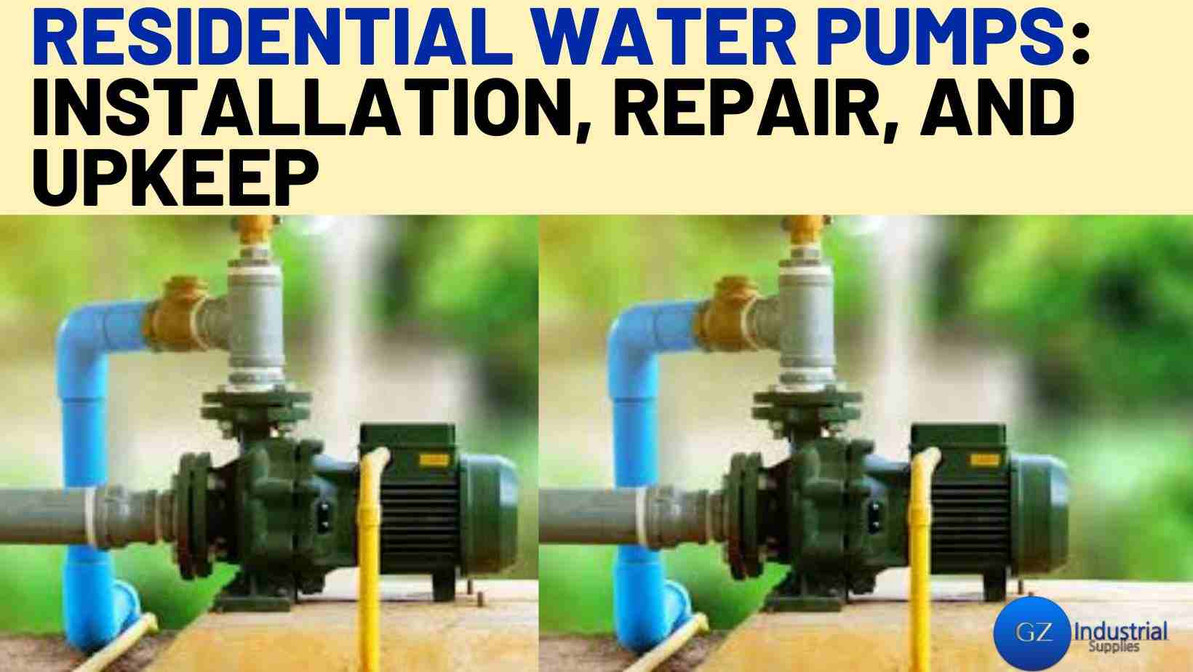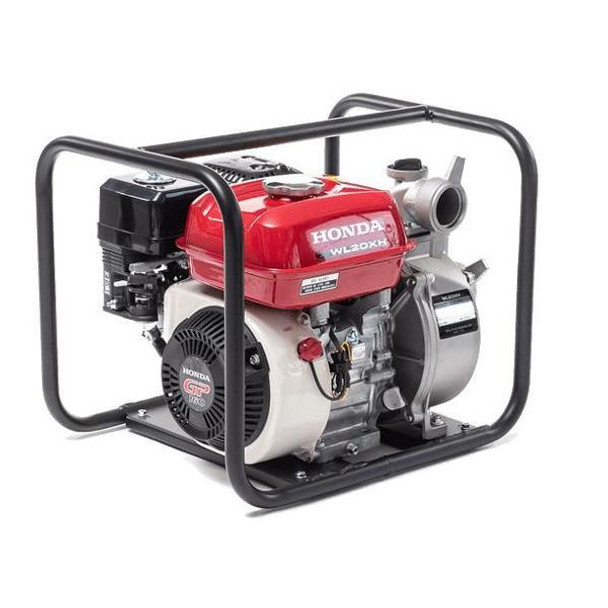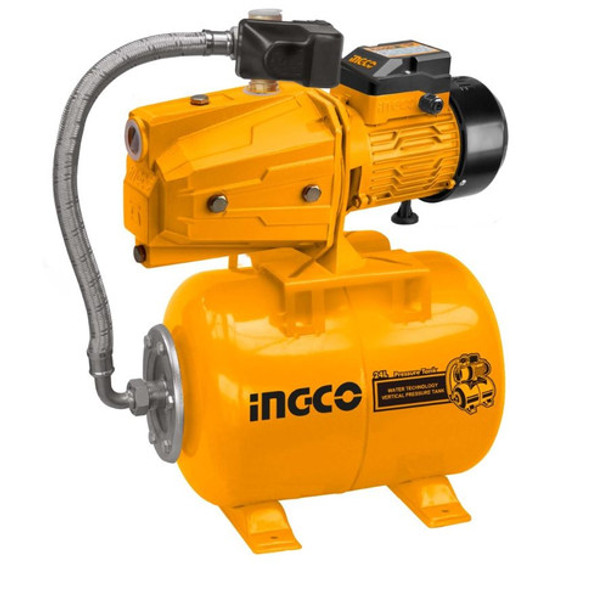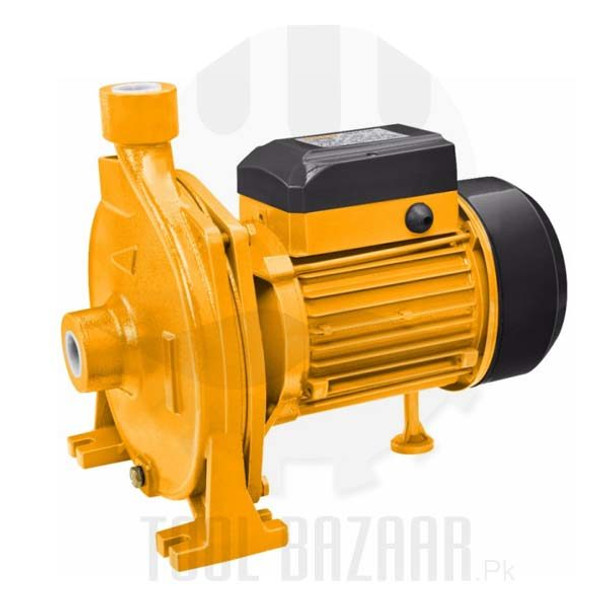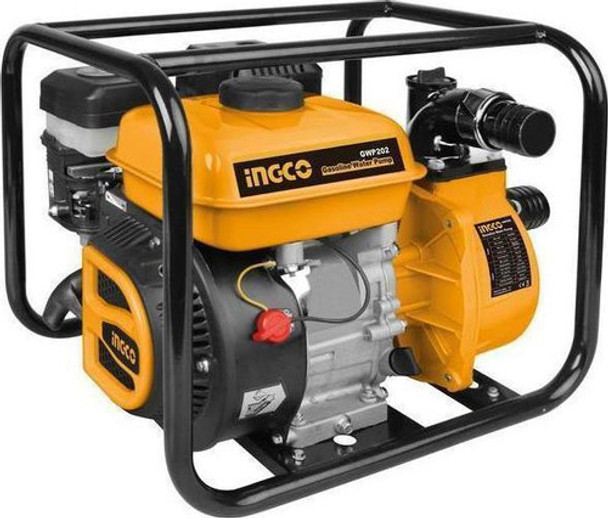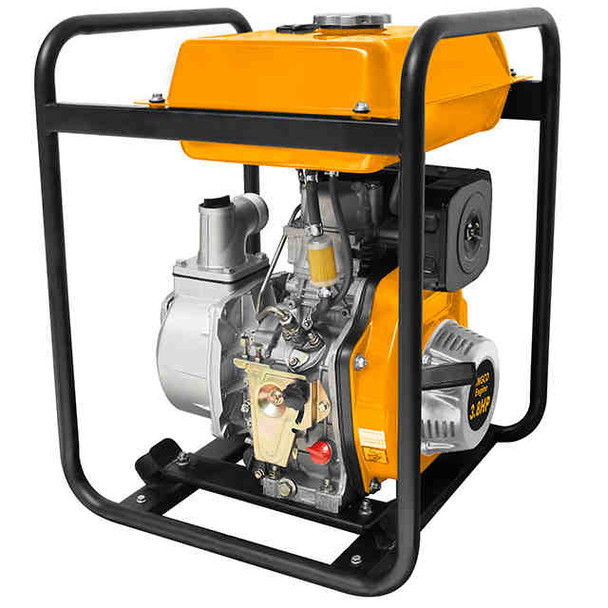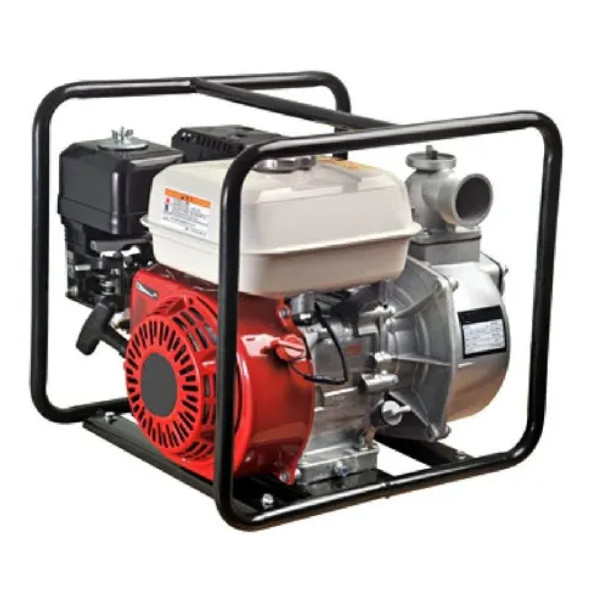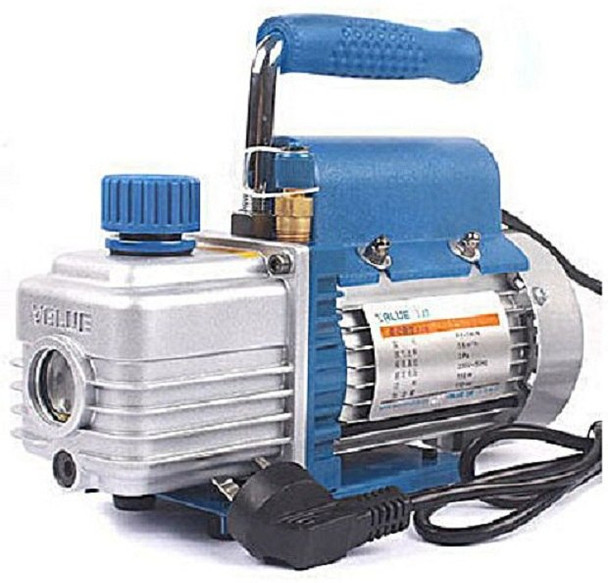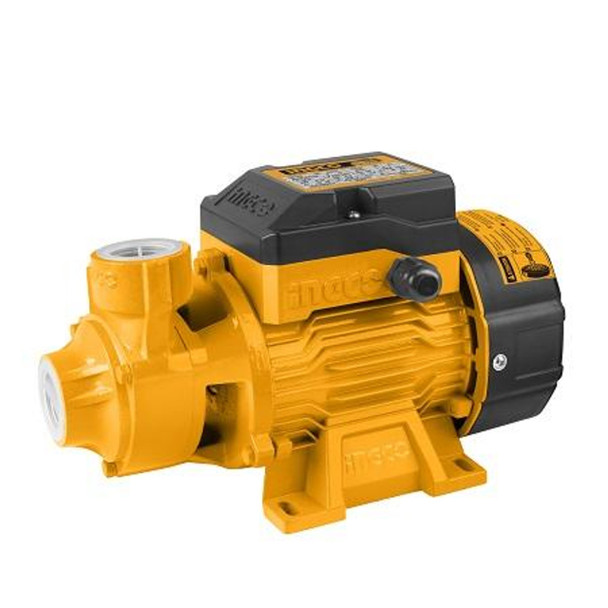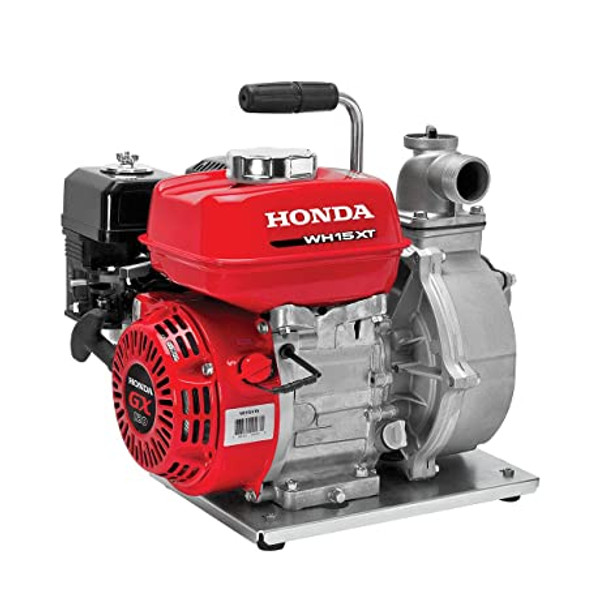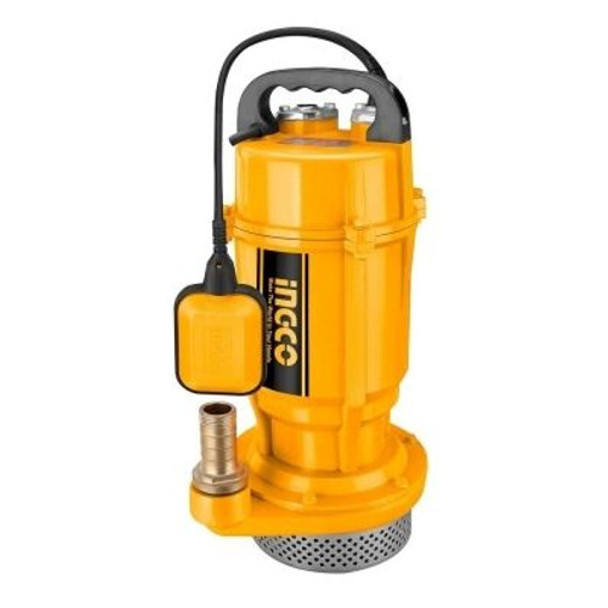Residential Water Pumps: Installation, Repair, and Upkeep
In the realm of residential infrastructure, water pumps stand as a key player that ensure a seamless and consistent water supply to households. Their significance cannot be overstated, as they play a pivotal role in elevating the quality of life by facilitating essential daily activities. From providing water for drinking and cooking to enabling irrigation and maintaining hygiene, residential water pumps form the backbone of a functional and reliable water distribution system. Especially in areas where municipal water supply may be inconsistent or insufficient, these pumps become indispensable, offering autonomy and resilience to homeowners. The ability to draw water from wells, boreholes, or other water sources, coupled with the power to distribute it throughout the household, transforms residential water pumps into vital assets that contribute to the comfort and well-being of residents.
Honda Water Pump WL20XH
The installation, repair, and upkeep of water pumps are like the three essential tasks that work together to keep your water supply running smoothly at home. First, when setting up a pump, it's important to plan carefully, be accurate, and follow safety rules. After it's set up, you might face issues that need fixing. This involves finding and solving common problems, and sometimes you can do it yourself, but for bigger issues, it's good to get help from professionals. Lastly, to make sure your pump works well for a long time, you need to take care of it. Regular tasks like checking its parts, cleaning filters, and keeping things lubricated help it last and work properly. So, by handling the installation, repair, and upkeep, you're making sure your water pump keeps the water flowing in your home.
This comprehensive guide aims to demystify the intricacies of residential water pumps, providing homeowners and DIY enthusiasts with valuable insights into installation, repair, and upkeep. Understanding that a well-functioning water pump is essential for the smooth operation of a household.
Types of Residential Water Pumps
Overview of common pump types
Water pumps are devices that move water or other fluids from one place to another, using different mechanisms and sources of power. Water pumps are essential for various residential applications, such as supplying water to faucets, showers, toilets, washing machines, dishwashers, sprinklers, and pools. Water pumps can also be used to remove excess water from basements, crawl spaces, or wells.
There are many types of water pumps, but they can be broadly classified into two main categories: centrifugal pumps and positive displacement pumps. Centrifugal pumps use a rotating impeller to create a pressure difference that pushes the water through the pump. Positive displacement pumps use a reciprocating or rotary motion to move a fixed amount of water with each cycle. Both types of pumps have advantages and disadvantages, depending on the specific application and the characteristics of the water source.
Some of the most common types of water pumps for residential use are:
Submersible pumps:
Submersible pumps are installed underwater, usually in wells or sumps. They are designed to push water to the surface, rather than pull it. Submersible pumps are efficient, durable, and quiet, but they require regular maintenance and inspection to prevent corrosion, clogging, or damage.
Jet pumps:
These pumps are mounted above the ground, either inside the house or in a separate well house. They use suction to draw water from a shallow well or a water tank. Jet pumps are simple, inexpensive, and easy to install, but they are less powerful and more prone to air lock than submersible pumps.
Water Pump INGCO JPT07508
Centrifugal pumps:
These pumps are also mounted above the ground, and they are commonly used for surface water sources, such as lakes, rivers, or ponds. Centrifugal pumps are fast, reliable, and versatile, but they require a priming system to start and a check valve to prevent backflow.
Booster pumps:
Booster pumps are used to increase the water pressure in the house, especially when the water supply is low or inconsistent. Booster pumps are usually installed after the main water pump, and they can be controlled by a pressure switch or a variable speed drive.
Sump pumps:
These pumps are specifically designed to remove excess water from basements or crawl spaces, where flooding or moisture can cause damage or health problems. Sump pumps are activated by a float switch when the water level rises above a certain point, and they discharge the water to a safe location.
Centrifugal Water Pump 1HP INGCO CPM7508
Choosing the right pump for your needs
The type of water pump that you need for your home depends on several factors, such as:
The source and quality of the water:
The type of water pump you need depends on the source of your water, its depth, cleanliness, and fluctuation levels. For example, if you have a deep well with clean water, you may need a submersible pump. If you have a shallow well with sediment or debris, you may need a jet pump with a filter. If you have a surface water source with low pressure, you may need a centrifugal pump with a priming system.
The demand and usage of the water:
You also need to know how much water you use, how often you use it, and for what purposes. For example, if you have a large family with multiple bathrooms, appliances, and irrigation systems, you may need a booster pump to increase the water pressure. If you have a basement or a crawl space that is prone to flooding, you may need a sump pump to prevent water damage.
Gasoline Water Pump INGCO GWP302
The budget and maintenance of the pump:
The cost of the pump, both initially and over time, is a crucial factor to consider. You also need to know how easy or difficult it is to install, operate, and maintain the pump. For example, if you have a limited budget and a simple water system, you may prefer a jet pump that is cheap and easy to install. If you have a higher budget and a complex water system, you may prefer a submersible pump that is more efficient and durable.
Installation Process
Pre-installation considerations
Before installing a water pump, you should consider the following factors:
- The type and size of the pump: You should choose a pump that matches your water source, demand, and usage. The pump should have the capacity, head, and flow rate that meet your needs. You should also consider the power source, voltage, and frequency of the pump.
- The location and orientation of the pump: You should install the pump in a dry, well-ventilated, and accessible area. The pump should be mounted on a rigid, level, and stable foundation. The pump should also be oriented according to the manufacturer’s instructions.
- The piping and fittings: You should use pipes and fittings that are compatible with the pump and the water quality. The pipes should be of adequate size, length, and material. The pipes should also be properly supported, aligned, and sealed.
- The accessories and components: You should install the necessary accessories and components for the pump, such as check valves, pressure tanks, pressure gauges, filters, switches, controllers, etc. You should follow the manufacturer’s recommendations and specifications for each accessory and component.
- The safety and environmental regulations: You should comply with the local codes and standards for electrical and plumbing systems. You should also follow the safety precautions and guidelines for working with water and electricity. You should also protect the pump and the environment from hazards such as fire, explosion, corrosion, contamination, etc.
Diesel Water Pump INGCO GEP302
Step-by-step guide for pump installation
The actual steps for installing a water pump may vary depending on the type and model of the pump. However, in general, the following steps can be followed:
- Read the instruction manual thoroughly to understand any specific requirements and guidelines.
- Use a rigid, strong, and stable pump foundation. It should be level, secure, and clean of debris.
- Install the pump base on the foundation.
- Install the pump and the driver on the baseplate.
- Add oil to the proper level in the bearing housings (pump, gear reducers, etc.).
- Check initial pump alignment.
- Connect the suction and discharge piping.
- Complete a second alignment check, and readjust piping as needed. For long-term operation, proper alignment is critical.
- Perform a rotational check of the driver by disengaging the coupling element2.
- Verify that the pump settings are correct.
- Install all ancillary equipment; coupling, and/or insert.
- Perform a pre-startup check, valves, electrical connections, etc., and prime the pump.
- Recheck the pump alignment to ensure that fluid weight in the piping is not causing a misalignment.
- Start the pumping unit and verify that the pump is delivering the desired flow rate and pressure by checking pressures, flows, temperature, and other indicators.
- If there is any problem, make the necessary adjustments and rerun the pump.
Safety measures during installation
Installing a water pump involves working with water and electricity, which can pose serious risks if not handled properly. Therefore, you should follow these safety measures during installation:
- Wear appropriate personal protective equipment, such as gloves, goggles, boots, etc.
- Turn off the power supply and disconnect the electrical cables before working on the pump.
- Use waterproof connectors and follow safety guidelines when connecting electrical cables.
- Do not touch any live wires or exposed terminals.
- Use a multimeter to check the voltage and polarity of the power source.
- Do not overload the circuit or use extension cords.
- Ground the pump and the electrical system to prevent electric shocks.
- Do not operate the pump without water or with air in the system.
- Do not run the pump dry or against a closed valve.
- Do not exceed the maximum pressure or temperature ratings of the pump.
- Do not use the pump for flammable, explosive, corrosive, or toxic fluids.
- Do not modify or tamper with the pump or its components.
- Do not lift the pump by the piping or the electrical cables.
- Do not drop or hit the pump or its components.
- Do not expose the pump to extreme heat, cold, moisture, or dust.
Honda Gasoline Water Pump 3" GWP-4020729
Common Issues and DIY Repairs for Water Pumps
Identifying common pump problems
Water pumps are devices that move water or other fluids from one place to another, using different mechanisms and sources of power. Water pumps are essential for various residential applications, such as supplying water to faucets, showers, toilets, washing machines, dishwashers, sprinklers, and pools. Water pumps can also be used to remove excess water from basements, crawl spaces, or wells.
There are many types of water pumps, but they can be broadly classified into two main categories: centrifugal pumps and positive displacement pumps. Centrifugal pumps use a rotating impeller to create a pressure difference that pushes the water through the pump. Positive displacement pumps use a reciprocating or rotary motion to move a fixed amount of water with each cycle. Both types of pumps have advantages and disadvantages, depending on the specific application and the characteristics of the water source.
Some of the most common types of water pumps for residential use are:
- Submersible pumps: These pumps are installed underwater, usually in wells or sumps. They are designed to push water to the surface, rather than pull it. Submersible pumps are efficient, durable, and quiet, but they require regular maintenance and inspection to prevent corrosion, clogging, or damage.
- Jet pumps: These pumps are mounted above the ground, either inside the house or in a separate well house. They use suction to draw water from a shallow well or a water tank. Jet pumps are simple, inexpensive, and easy to install, but they are less powerful and more prone to air lock than submersible pumps.
- Centrifugal pumps: These pumps are also mounted above the ground, and they are commonly used for surface water sources, such as lakes, rivers, or ponds. Centrifugal pumps are fast, reliable, and versatile, but they require a priming system to start and a check valve to prevent backflow.
- Booster pumps: These pumps are used to increase the water pressure in the house, especially when the water supply is low or inconsistent. Booster pumps are usually installed after the main water pump, and they can be controlled by a pressure switch or a variable speed drive.
- Sump pumps: These pumps are specifically designed to remove excess water from basements or crawl spaces, where flooding or moisture can cause damage or health problems. Sump pumps are activated by a float switch when the water level rises above a certain point, and they discharge the water to a safe location.
Some of the common pump problems that you may experience are:
- Overheating: This occurs when the pump runs too hot, either due to excessive friction, lack of lubrication, poor ventilation, or high ambient temperature. Overheating can damage the pump’s motor, seals, bearings, and other components.
- Leakage: This occurs when water escapes from the pump’s casing, joints, seals, or fittings. Leakage can cause water loss, pressure drop, corrosion, contamination, and electrical hazards.
- Low water pressure: This occurs when the pump fails to deliver the desired water flow or pressure, either due to clogging, wear, damage, or incorrect settings. Low water pressure can affect the quality and quantity of water supply to your faucets, showers, appliances, and irrigation systems.
- Noisy operation: This occurs when the pump produces abnormal sounds, such as grinding, squeaking, ticking, or banging. Noisy operation can indicate problems with the pump’s bearings, impeller, shaft, or motor.
- Cavitation: This occurs when the pump’s suction pressure drops below the vapor pressure of the water, causing bubbles to form and collapse within the pump. Cavitation can cause noise, vibration, erosion, and damage to the pump’s impeller and casing.
Two Stage Vacuum Pump
DIY troubleshooting and repairs
Some of the pump problems can be fixed by yourself, using simple tools and techniques. Here are some DIY troubleshooting and repair tips for common pump problems:
Overheating:
To prevent or fix overheating, you should check and clean the pump’s vents, fan, and cooling system. You should also ensure that the pump is properly lubricated, aligned, and balanced. You should also avoid running the pump for too long or under high load.
Leakage:
When it comes to leakages, you should inspect and tighten the pump’s joints, seals, and fittings. You should also replace any worn-out or damaged parts. You should also use the appropriate sealant, gasket, or tape to seal the leaks.
Low water pressure:
For low water pressure, check and clean the pump’s filter, strainer, impeller, and valves. You should also adjust the pump’s pressure switch, pressure tank, and flow regulator. You should also ensure that the pump’s suction and discharge pipes are of adequate size, length, and material.
Noisy operation:
To prevent or fix noisy operation, you should check and replace the pump’s bearings, impeller, shaft, or motor. You should also ensure that the pump is properly mounted, supported, and isolated. You should also avoid running the pump at excessive speed or with air or water in the system.
Cavitation:
To prevent or fix cavitation, you should increase the pump’s suction pressure by raising the water level, reducing the suction lift, or increasing the suction pipe diameter. Also decrease the pump’s discharge pressure by opening the discharge valve, reducing the discharge head, or decreasing the discharge pipe diameter. You should also avoid running the pump at low flow or with water that is too hot or too cold.
When to seek professional help
Some of the pump problems are beyond the scope of DIY repairs and require professional help. You should seek professional help when:
- The pump is under warranty or guarantee, and you do not want to void it by doing unauthorized repairs.
- The pump is too complex, sophisticated, or specialized, and you do not have the necessary skills, tools, or knowledge to repair it.
- The pump is severely damaged, worn-out, or outdated, and you need to replace it with a new or upgraded one.
- The pump problem is recurrent, persistent, or unclear, and you need to diagnose and fix it with advanced equipment and techniques.
- The pump problem poses a serious risk to your safety, health, or property, and you need to resolve it as soon as possible.
Peripheral Pump 0.5HP INGCO VPM3708
Upgrading and Efficiency of Water Pumps
Upgrading to energy-efficient models
One of the ways to improve the efficiency of water pumps is to upgrade to more energy-efficient models. Energy-efficient pumps are designed to use less energy to deliver the same or better performance as conventional pumps. Energy-efficient pumps can have several features, such as:
- High-efficiency motors that reduce electrical losses and heat generation.
- Variable speed drives that adjust the pump speed according to the demand and avoid wasting energy at low or high flows.
- Smart controls that monitor and optimize the pump operation and maintenance.
- Improved impellers, casings, and seals that reduce friction, wear, and leakage.
Upgrading to energy-efficient pumps can have several benefits, such as:
- Saving energy and money by reducing the electricity consumption and bills.
- Reducing greenhouse gas emissions and environmental impact by lowering the carbon footprint of the water system.
- Increasing the reliability and lifespan of the pump by preventing overheating, damage, and breakdowns.
- Improving the water quality and quantity by ensuring adequate and consistent water pressure and flow.
Incorporating smart technologies
Another way to improve the efficiency of water pumps is to incorporate smart technologies that enable the pump to communicate, analyze, and adapt to the changing conditions and needs of the water system. Smart technologies can include sensors, actuators, wireless networks, cloud computing, artificial intelligence, and internet of things. Smart technologies can have several functions, such as:
- Measuring and transmitting the pump’s parameters, such as flow, pressure, temperature, vibration, power, and efficiency.
- Detecting and diagnosing the pump’s problems, such as clogging, leakage, cavitation, misalignment, and malfunction.
- Adjusting and optimizing the pump’s settings, such as speed, torque, and direction.
- Reporting and alerting the pump’s status, performance, and faults to the users or operators.
- Learning and predicting the pump’s behavior, patterns, and trends.
Incorporating smart technologies can have several benefits, such as:
- Enhancing the energy efficiency and sustainability of the pump by reducing the energy consumption and waste.
- Improving the operational efficiency and productivity of the pump by increasing the accuracy, speed, and flexibility.
- Extending the service life and durability of the pump by minimizing the wear, tear, and deterioration.
- Ensuring the safety and security of the pump by preventing or mitigating the risks, hazards, and damages.
Honda High Pressure Centrifugal Water Pump 1.5", WH15
Enhancing overall water system efficiency
A third way to improve the efficiency of water pumps is to enhance the overall efficiency of the water system that the pump is part of. The water system consists of various components, such as pipes, valves, tanks, filters, meters, and controllers, that work together to deliver water to the end-users. Enhancing the overall water system efficiency can involve several actions, such as:
- Replacing or repairing the old, damaged, or leaky pipes, valves, and fittings that cause water loss, pressure drop, and corrosion.
- Installing or upgrading the water meters, sensors, and controllers that monitor and regulate the water flow, pressure, and quality.
- Implementing or improving the water conservation and management practices that reduce the water demand, usage, and waste.
- Adopting or integrating the renewable energy sources, such as solar, wind, or hydro, that power the water pumps and reduce the reliance on fossil fuels.
Enhancing the overall water system efficiency can have several benefits, such as:
- Saving water and energy by avoiding the unnecessary or excessive pumping, conveyance, and treatment of water.
- Reducing the operational and maintenance costs by lowering the electricity, water, and repair bills.
- Protecting the environment and public health by preventing water pollution, contamination, and scarcity.
- Increasing the customer satisfaction and loyalty by providing the adequate and reliable water supply and service.
Emergency Repairs and Quick Fixes for Water Pumps
Immediate actions for pump emergencies
Sometimes, water pumps can fail unexpectedly, causing serious problems such as no water supply, flooding, or fire. In such cases, you need to act quickly and take some immediate actions to prevent further damage or danger. Here are some steps you can follow in case of a pump emergency:
- Turn off the power supply to the pump and disconnect the electrical cables. This will prevent electric shocks, short circuits, or sparks that can cause fire or injury.
- Shut off the water valves on both the suction and discharge sides of the pump. This will stop the water flow and reduce the pressure in the pump and the pipes.
- Check the pump and the surrounding area for any signs of leakage, overheating, smoke, or fire. If you see any of these, evacuate the area and call the fire department or the emergency services.
- Call a professional pump service and repair company as soon as possible. Explain the situation and request an urgent visit. Do not attempt to fix the pump by yourself, as you may cause more damage or harm.
Quick fixes for minor issues
Not all pump problems require professional help. Some of them can be fixed by yourself, using simple tools and techniques. Here are some quick fixes for minor issues that you can try:
- If the pump is making noise or vibrating, check the alignment and balance of the pump and the motor. Adjust or tighten the bolts, nuts, or screws as needed. You can also use a rubber pad or a vibration isolator to reduce the noise and vibration.
- If the pump is losing pressure or flow, check the filter, strainer, impeller, and valves for any clogging, wear, or damage. Clean or replace them as needed. You can also adjust the pressure switch, pressure tank, or flow regulator to increase the pressure or flow.
- If the pump is leaking water, check the joints, seals, and fittings for any cracks, holes, or looseness. Tighten or replace them as needed. You can also use a sealant, a gasket, or a tape to seal the leaks.
- If the pump is not starting or running, check the power supply, the electrical cables, and the fuses for any faults or damages. Repair or replace them as needed. You can also use a multimeter to test the voltage and polarity of the power source.
Submersible Clean Water Pump 0.5HP INGCO SPC3702
Creating an emergency repair kit
To be prepared for any pump problems, it is a good idea to create an emergency repair kit that contains the essential tools and materials that you may need. Here are some items that you can include in your emergency repair kit:
- A wrench, a screwdriver, a hammer, a pliers, and a knife. These are the basic tools that you can use to adjust, tighten, or loosen the pump components.
- A multimeter, a wire stripper, a wire cutter, and a soldering iron. These are the electrical tools that you can use to test, connect, or repair the electrical cables.
- A sealant, a gasket, a tape, and a clamp. These are the sealing materials that you can use to stop or prevent water leaks.
- A filter, a strainer, an impeller, and a valve. These are the spare parts that you can use to replace the worn-out or damaged pump components.
- A flashlight, a fire extinguisher, and a first aid kit. These are the safety items that you can use in case of an emergency situation.
Signs for Pump Replacement
Recognizing indications for pump replacement
Water pumps are devices that move water or other fluids from one place to another, using different mechanisms and sources of power. Water pumps are essential for various residential applications, such as supplying water to faucets, showers, toilets, washing machines, dishwashers, sprinklers, and pools. Water pumps can also be used to remove excess water from basements, crawl spaces, or wells.
However, water pumps are not designed to last forever, and they can wear out or break down over time. When this happens, you may need to replace your water pump with a new one. But how do you know when your water pump needs to be replaced? Here are some signs to look out for:
- No water: The most obvious sign of a water pump failure is when you turn on a faucet or flush a toilet and get no water at all. This could mean that the pump is not working at all, or that there is a major leak in the system.
- Low water pressure: Another sign of a water pump problem is when you get low water pressure or flow from your faucets, showers, appliances, or irrigation systems. This could mean that the pump is clogged, worn, damaged, or incorrectly set.
- Dirty water: A third sign of a water pump issue is when you get dirty, murky, or discolored water from your water sources. This could mean that the pump is contaminated, corroded, or eroded by the water or the soil.
- Noisy operation: A fourth sign of a water pump trouble is when you hear abnormal noises from the pump, such as grinding, squeaking, ticking, or banging. This could mean that the pump has problems with its bearings, impeller, shaft, or motor.
- High energy bills: A fifth sign of a water pump concern is when you notice a spike in your energy bills. This could mean that the pump is running inefficiently, constantly, or unnecessarily, and wasting energy.
Choosing a suitable replacement
If you notice any of the signs mentioned above, you may need to replace your water pump with a new one. But how do you choose a suitable replacement for your water pump? Here are some factors to consider:
- The type and size of the pump: You should choose a pump that matches your water source, demand, and usage. The pump should have the capacity, head, and flow rate that meet your needs. You should also consider the power source, voltage, and frequency of the pump.
- The energy efficiency of the pump: You should choose a pump that uses less energy to deliver the same or better performance as your old pump. Energy-efficient pumps can have features such as high-efficiency motors, variable speed drives, smart controls, and improved impellers, casings, and seals.
- The durability and reliability of the pump: You should choose a pump that can withstand the wear and tear of the water and the soil, and that can operate smoothly and consistently. Durable and reliable pumps can have features such as corrosion-resistant materials, self-priming mechanisms, overload protection, and automatic shut-off.
- The warranty and service of the pump: You should choose a pump that comes with a warranty or guarantee that covers the parts and labor for a certain period of time. You should also choose a pump that has a good reputation and a reliable service network that can provide installation, maintenance, and repair.
Related Article;
The Best Water Pumps in Nigeria 2023 Reviews
Pumping Solutions for Agriculture: Water Pumps for Farming
Choosing the Right Water Pump for Your Needs: A Buyer's Guide
Conclusion
Water pumps stand as indispensable devices crucial for delivering water to homes and businesses, employing various mechanisms and power sources to move fluids efficiently. Yet, these essential systems entail environmental impacts and necessitate precise installation, maintenance, and repair.
Throughout this article, diverse facets of water pumps and their effective management have been explored. The array of topics covered includes an understanding of residential water pump types—ranging from submersible, jet, centrifugal, booster, to sump pumps—to guidance on choosing the most suitable pump. Factors such as water source, quality, demand, usage, budget, and maintenance have been highlighted as key considerations in this selection process. Detailed insights into installation procedures, safety protocols, common issues, DIY repairs, signs for replacement, and eco-friendly practices have also been provided. The aim has been to equip readers with comprehensive knowledge to identify problems, undertake necessary repairs, and make informed decisions about replacements or upgrades, thus ensuring both efficient water supply and minimized environmental impact.
Water pumps serve not only to enhance comfort and convenience but also play a pivotal role in health and environmental sustainability. Therefore, taking proactive and responsible steps in managing these systems is strongly encouraged. Seeking professional assistance when necessary ensures the benefits of water pumps while mitigating associated costs and risks.
Recent Posts
-
How to Choose the Right Industrial Cleaning Service Provider
Key takeawayThoroughly Assess Your Needs and Providers: Understand your specific industrial cle …Jul 26, 2024 -
Floor Paint Maintenance: How to Keep Your Floors Looking Their Best
Maintaining your painted floors is essential for preserving their beauty and extending their lifespa …Jul 25, 2024 -
The Best Floor Paint for Different Types of Flooring
When it comes to revitalizing your home's flooring, choosing the right paint can make all the d …Jul 19, 2024

